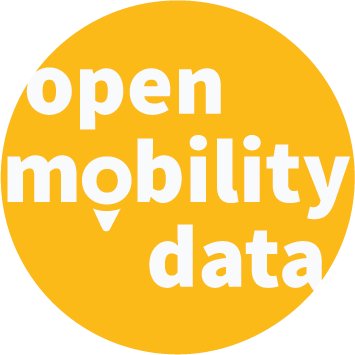The Maps API web services suite offers the following APIs: - Raster The Maps Raster API renders map data that is divided into gridded sections called tiles. Tiles are square images (png or jpg format) in various sizes which are available at 19 different zoom levels, ranging from 0 to 20. For zoom level 0, the entire earth is displayed on one single tile, while at zoom level 20, the world is divided into 240 tiles. - Vector Similar to Maps Raster API, the Maps Vector API serves data on different zoom level ranging from 0 to 22. For zoom level 0, the entire earth is displayed on one single tile, while at zoom level 22, the world is divided into 244 tiles. The Maps Vector Service delivers geographic map data packaged in a vector representation of squared sections called vector tiles. Each tile includes pre-defined collections of map features (points, lines, road shapes, water polygons, building footprints, ect.) delivered in one of the specified vector formats. Format of the tile is formally described using protobuf schema.
Routing consists of the following service: Calculate Route Calculates a route between an origin and a destination, passing through waypoints (if specified). Additional routing parameters like traffic, avoidance conditions, departure/arrival time etc. can be taken into account. Calculate Reachable Range Calculates a set of locations that can be reached from the origin point, subject to the available fuel or energy budget that is specified in the request.
### Overview Tradematic Cloud is a trading infrastructure for building investment services. It’s a trading engine + API + ready-made adapters to stock and forex brokers, crypto exchanges, and market data providers. You can use it as a cloud API, or you can deploy it on your servers. ### How to use Tradematic Cloud API Sign up at [tradematic.cloud](https://tradematic.cloud). After signing up, you will receive your API key. ### Authorization Add the 'X-API-KEY' header with your API key to each request. ### Examples of writing code with Tradematic Cloud API Examples are available at [tradematic.cloud](https://tradematic.cloud). ### Swagger (.yaml) File Swagger (.yaml) file can be found [here](http://tradematic.cloud/sdk/swagger.yaml).
At Trakt, we collect lots of interesting information about what tv shows and movies everyone is watching. Part of the fun with such data is making it available for anyone to mash up and use on their own site or app. The Trakt API was made just for this purpose. It is very easy to use, you basically call a URL and get some JSON back. More complex API calls (such as adding a movie or show to your collection) involve sending us data. These are still easy to use, you simply POST some JSON data to a specific URL. Make sure to check out the [**Required Headers**](#introduction/required-headers) and [**Authentication**](#reference/authentication-oauth) sections for more info on what needs to be sent with each API call. Also check out the [**Terminology**](#introduction/terminology) section insight into the features Trakt supports. # Create an App To use the Trakt API, you'll need to [**create a new API app**](https://trakt.tv/oauth/applications/new). # Stay Connected API discussion and bugs should be posted in the [**GitHub Developer Forum**](https://github.com/trakt/api-help/issues) and *watch* the repository if you'd like to get notifications. Make sure to follow our [**API Blog**](https://apiblog.trakt.tv) and [**@traktapi on Twitter**](https://twitter.com/traktapi) too. # API URL The API should always be accessed over SSL. ``` https://api.trakt.tv ``` If you would like to use our sandbox environment to not fill production with test data, use this URL over SSL. **Note:** Staging is a completely separate environment, so you'll need to [**create a new API app on staging**](https://staging.trakt.tv/oauth/applications/new). ``` https://api-staging.trakt.tv ``` # Verbs The API uses restful verbs. | Verb | Description | |---|---| | `GET` | Select one or more items. Success returns `200` status code. | | `POST` | Create a new item. Success returns `201` status code. | | `PUT` | Update an item. Success returns `200` status code. | | `DELETE` | Delete an item. Success returns `200` or `204` status code. | # Status Codes The API will respond with one of the following HTTP status codes. | Code | Description | |---|---| | `200` | Success | `201` | Success - *new resource created (POST)* | `204` | Success - *no content to return (DELETE)* | `400` | Bad Request - *request couldn't be parsed* | `401` | Unauthorized - *OAuth must be provided* | `403` | Forbidden - *invalid API key or unapproved app* | `404` | Not Found - *method exists, but no record found* | `405` | Method Not Found - *method doesn't exist* | `409` | Conflict - *resource already created* | `412` | Precondition Failed - *use application/json content type* | `420` | Account Limit Exceeded - *list count, item count, etc* | `422` | Unprocessable Entity - *validation errors* | `423` | Locked User Account - *have the user contact support* | `426` | VIP Only - *user must upgrade to VIP* | `429` | Rate Limit Exceeded | `500` | Server Error - *please open a support ticket* | `502` | Service Unavailable - *server overloaded (try again in 30s)* | `503` | Service Unavailable - *server overloaded (try again in 30s)* | `504` | Service Unavailable - *server overloaded (try again in 30s)* | `520` | Service Unavailable - *Cloudflare error* | `521` | Service Unavailable - *Cloudflare error* | `522` | Service Unavailable - *Cloudflare error* # Required Headers You'll need to send some headers when making API calls to identify your application, set the version and set the content type to JSON. | Header | Value | |---|---| | `Content-type` * | `application/json` | | `trakt-api-key` * | Your `client_id` listed under your Trakt applications. | | `trakt-api-version` * | `2` | API version to use. All `POST`, `PUT`, and `DELETE` methods require a valid OAuth `access_token`. Some `GET` calls require OAuth and others will return user specific data if OAuth is sent. Methods that 🔒 **require** or have 🔓 **optional** OAuth will be indicated. Your OAuth library should take care of sending the auth headers for you, but for reference here's how the Bearer token should be sent. | Header | Value | |---|---| | `Authorization` | `Bearer [access_token]` | # Rate Limiting All API methods are rate limited. A `429` HTTP status code is returned when the limit has been exceeded. Check the headers for detailed info, then try your API call in `Retry-After` seconds. | Header | Value | |---|---| | `X-Ratelimit` | `{"name":"UNAUTHED_API_GET_LIMIT","period":300,"limit":1000,"remaining":0,"until":"2020-10-10T00:24:00Z"}` | | `Retry-After` | `10` | Here are the current limits. There are separate limits for authed (user level) and unauthed (application level) calls. We'll continue to adjust these limits to optimize API performance for everyone. The goal is to prevent API abuse and poor coding, but allow users to use apps normally. | Name | Verb | Methods | Limit | |---|---|---|---| | `AUTHED_API_POST_LIMIT` | `POST`, `PUT`, `DELETE` | all | 1 call per second | | `AUTHED_API_GET_LIMIT` | `GET` | all | 1000 calls every 5 minutes | | `UNAUTHED_API_GET_LIMIT` | `GET` | all | 1000 calls every 5 minutes | # Locked User Account A `423` HTTP status code is returned when the OAuth user has a locked user account. Please instruct the user to [**contact Trakt support**](https://support.trakt.tv) so we can fix their account. API access will be suspended for the user until we fix their account. # VIP Methods Some API methods are tagged 🔥 **VIP Only**. A `426` HTTP status code is returned when the user isn't a VIP, indicating they need to sign up for [**Trakt VIP**](https://trakt.tv/vip) in order to use this method. In your app, please open a browser to `X-Upgrade-URL` so the user can sign up for Trakt VIP. | Header | Value | |---|---| | `X-Upgrade-URL` | `https://trakt.tv/vip` | Some API methods are tagged 🔥 **VIP Enhanced**. A `420` HTTP status code is returned when the user has exceeded their account limit. Signing up for [**Trakt VIP**](https://trakt.tv/vip) will increase these limits. If the user isn't a VIP, please open a browser to `X-Upgrade-URL` so the user can sign up for Trakt VIP. If they are already VIP and still exceeded the limit, please display a message indicating this. | Header | Value | |---|---| | `X-Upgrade-URL` | `https://trakt.tv/vip` | | `X-VIP-User` | `true` or `false` | | `X-Account-Limit` | Limit allowed. | # Pagination Some methods are paginated. Methods with 📄 **Pagination** will load 1 page of 10 items by default. Methods with 📄 **Pagination Optional** will load all items by default. In either case, append a query string like `?page={page}&limit={limit}` to the URL to influence the results. | Parameter | Type | Default | Value | |---|---|---|---| | `page` | integer | `1` | Number of page of results to be returned. | | `limit` | integer | `10` | Number of results to return per page. | All paginated methods will return these HTTP headers. | Header | Value | |---|---| | `X-Pagination-Page` | Current page. | | `X-Pagination-Limit` | Items per page. | | `X-Pagination-Page-Count` | Total number of pages. | | `X-Pagination-Item-Count` | Total number of items. | # Extended Info By default, all methods will return minimal info for movies, shows, episodes, people, and users. Minimal info is typically all you need to match locally cached items and includes the `title`, `year`, and `ids`. However, you can request different extended levels of information by adding `?extended={level}` to the URL. Send a comma separated string to get multiple types of extended info. **Note:** This returns a lot of extra data, so please only use extended parameters if you actually need them! | Level | Description | |---|---| | `full` | Complete info for an item. | `metadata` | **Collection only.** Additional video and audio info. # Filters Some `movies`, `shows`, `calendars`, and `search` methods support additional filters and will be tagged with 🎚 **Filters**. Applying these filters refines the results and helps your users to more easily discover new items. Add a query string (i.e. `?years=2016&genres=action`) with any filters you want to use. Some filters allow multiples which can be sent as comma delimited parameters. For example, `?genres=action,adventure` would match the `action` OR `adventure` genre. **Note:** Make sure to properly URL encode the parameters including spaces and special characters. #### Common Filters | Parameter | Multiples | Example | Value | |---|---|---|---| | `query` | | `batman` | Search titles and descriptions. | | `years` | | `2016` | 4 digit year or range of years. | | `genres` | ✓ | `action` | [Genre slugs.](#reference/genres) | | `languages` | ✓ | `en` | [2 character language code.](#reference/languages) | | `countries` | ✓ | `us` | [2 character country code.](#reference/countries) | | `runtimes` | | `30-90` | Range in minutes. | | `studios` | ✓ | `marvel-studios` | Studio slugs. | #### Rating Filters Trakt, TMDB, and IMDB ratings apply to `movies`, `shows`, and `episodes`. Rotten Tomatoes and Metacritic apply to `movies`. | Parameter | Multiples | Example | Value | |---|---|---|---| | `ratings` | | `75-100` | Trakt rating range between `0` and `100`. | | `votes` | | `5000-10000` | Trakt vote count between `0` and `100000`. | | `tmdb_ratings` | | `5.5-10.0` | TMDB rating range between `0.0` and `10.0`. | | `tmdb_votes` | | `5000-10000` | TMDB vote count between `0` and `100000`. | | `imdb_ratings` | | `5.5-10.0` | IMDB rating range between `0.0` and `10.0`. | | `imdb_votes` | | `5000-10000` | IMDB vote count between `0` and `3000000`. | | `rt_meters` | | `5.5-10.0` | Rotten Tomatoes meter range between `0` and `100`. | | `metascores` | | `5.5-10.0` | Metacritic score range between `0` and `100`. | #### Movie Filters | Parameter | Multiples | Example | Value | |---|---|---|---| | `certifications` | ✓ | `pg-13` | US content certification. | #### Show Filters | Parameter | Multiples | Example | Value | |---|---|---|---| | `certifications` | ✓ | `tv-pg` | US content certification. | | `networks` | ✓ | `HBO` | Network name. | | `status` | ✓ | `ended` | Set to `returning series`, `continuing`, `in production`, `planned`, `upcoming`, `pilot`, `canceled`, or `ended`. | # CORS When creating your API app, specify the JavaScript (CORS) origins you'll be using. We use these origins to return the headers needed for CORS. # Dates All dates will be GMT and returned in the ISO 8601 format like `2014-09-01T09:10:11.000Z`. Adjust accordingly in your app for the user's local timezone. # Emojis We use short codes for emojis like `:smiley:` and `:raised_hands:` and render them on the Trakt website using [**JoyPixels**](https://www.joypixels.com/) _(verion 6.6.0)_. Methods that support emojis are tagged with 😁 **Emojis**. For POST methods, you can send standard unicode emojis and we'll automatically convert them to short codes. For GET methods, we'll return the short codes and it's up to your app to convert them back to unicode emojis. # Standard Media Objects All methods will accept or return standard media objects for `movie`, `show`, `season`, `episode`, `person`, and `user` items. Here are examples for all minimal objects. #### movie ``` { "title": "Batman Begins", "year": 2005, "ids": { "trakt": 1, "slug": "batman-begins-2005", "imdb": "tt0372784", "tmdb": 272 } } ``` #### show ``` { "title": "Breaking Bad", "year": 2008, "ids": { "trakt": 1, "slug": "breaking-bad", "tvdb": 81189, "imdb": "tt0903747", "tmdb": 1396 } } ``` #### season ``` { "number": 0, "ids": { "trakt": 1, "tvdb": 439371, "tmdb": 3577 } } ``` #### episode ``` { "season": 1, "number": 1, "title": "Pilot", "ids": { "trakt": 16, "tvdb": 349232, "imdb": "tt0959621", "tmdb": 62085 } } ``` #### person ``` { "name": "Bryan Cranston", "ids": { "trakt": 142, "slug": "bryan-cranston", "imdb": "nm0186505", "tmdb": 17419 } } ``` #### user ``` { "username": "sean", "private": false, "name": "Sean Rudford", "vip": true, "vip_ep": true, "ids": { "slug": "sean" } } ``` # Images The standard media objects for all `movie`, `show`, `season`, `episode`, and `person` items include an `ids` object. These `ids` map to other services like [TMDB](https://www.themoviedb.org), [TVDB](https://thetvdb.com), [Fanart.tv](https://fanart.tv), [IMDB](https://www.imdb.com), and [OMDB](https://www.omdbapi.com/). Most of these services have free APIs you can use to grab lots of great looking images. Here’s a chart to help you find the best artwork for your app. [**We also wrote an article to help with this.**](https://apiblog.trakt.tv/how-to-find-the-best-images-516045bcc3b6) | Media | Type | [TMDB](https://developers.themoviedb.org/3) | [TVDB](https://api.thetvdb.com/swagger) | [Fanart.tv](http://docs.fanarttv.apiary.io) | [OMDB](https://www.omdbapi.com) | |---|---|---|---|---|---| | `shows` | `poster` | ✓ | ✓ | ✓ | ✓ | | | `fanart` | ✓ | ✓ | ✓ | | | | `banner` | | ✓ | ✓ | | | | `logo` | | | ✓ | | | | `clearart` | | | ✓ | | | | `thumb` | | | ✓ | | | `seasons` | `poster` | ✓ | ✓ | ✓ | | | | `banner` | | ✓ | ✓ | | | | `thumb` | | | ✓ | | | `episodes` | `screenshot` | ✓ | ✓ | | | | `movies` | `poster` | ✓ | | ✓ | ✓ | | | `fanart` | ✓ | | ✓ | | | | `banner` | | | ✓ | | | | `logo` | | | ✓ | | | | `clearart` | | | ✓ | | | | `thumb` | | | ✓ | | | `person` | `headshot` | ✓ | | | | | | `character` | | ✓ | | | # Website Media Links There are several ways to construct direct links to media on the Trakt website. The website itself uses slugs so the URLs are more readable. | Type | URL | |---|---| | `movie` | `/movies/:slug` | | `show` | `/shows/:slug` | | `season` | `/shows/:slug/seasons/:num` | | `episode` | `/shows/:slug/seasons/:num/episodes/:num` | | `person` | `/people/:slug` | | `comment` | `/comments/:id` | | `list` | `/lists/:id` | You can also create links using the Trakt, IMDB, TMDB, or TVDB IDs. We recommend using the Trakt ID if possible since that will always have full coverage. If you use the search url without an `id_type` it will return search results if multiple items are found. | Type | URL | |---|---| | `trakt` | `/search/trakt/:id` | | | `/search/trakt/:id?id_type=movie` | | | `/search/trakt/:id?id_type=show` | | | `/search/trakt/:id?id_type=season` | | | `/search/trakt/:id?id_type=episode` | | | `/search/trakt/:id?id_type=person` | | `imdb` | `/search/imdb/:id` | | `tmdb` | `/search/tmdb/:id` | | | `/search/tmdb/:id?id_type=movie` | | | `/search/tmdb/:id?id_type=show` | | | `/search/tmdb/:id?id_type=episode` | | | `/search/tmdb/:id?id_type=person` | | `tvdb` | `/search/tvdb/:id` | | | `/search/tvdb/:id?id_type=show` | | | `/search/tvdb/:id?id_type=episode` | # Third Party Libraries All of the libraries listed below are user contributed. If you find a bug or missing feature, please contact the developer directly. These might help give your project a head start, but we can't provide direct support for any of these libraries. Please help us keep this list up to date. | Language | Name | Repository | |---|---|---| | `C#` | `Trakt.NET` | https://github.com/henrikfroehling/Trakt.NET | | | `TraktSharp` | https://github.com/wwarby/TraktSharp | | `C++` | `libtraqt` | https://github.com/RobertMe/libtraqt | | `Clojure` | `clj-trakt` | https://github.com/niamu/clj-trakt | | `Java` | `trakt-java` | https://github.com/UweTrottmann/trakt-java | | `Node.js` | `Trakt.tv` | https://github.com/vankasteelj/trakt.tv | | | `TraktApi2` | https://github.com/PatrickE94/traktapi2 | | `Python` | `trakt.py` | https://github.com/fuzeman/trakt.py | | | `pyTrakt` | https://github.com/moogar0880/PyTrakt | | `R` | `tRakt` | https://github.com/jemus42/tRakt | | `React Native` | `nodeless-trakt` | https://github.com/kdemoya/nodeless-trakt | | `Ruby` | `omniauth-trakt` | https://github.com/wafcio/omniauth-trakt | | | `omniauth-trakt` | https://github.com/alextakitani/omniauth-trakt | | `Swift` | `TraktKit` | https://github.com/MaxHasADHD/TraktKit | | | `AKTrakt` | https://github.com/arsonik/AKTrakt | # Terminology Trakt has a lot of features and here's a chart to help explain the differences between some of them. | Term | Description | |---|---| | `scrobble` | Automatic way to track what a user is watching in a media center. | | `checkin` | Manual action used by mobile apps allowing the user to indicate what they are watching right now. | | `history` | All watched items (scrobbles, checkins, watched) for a user. | | `collection` | Items a user has available to watch including Blu-Rays, DVDs, and digital downloads. | | `watchlist` | Items a user wants to watch in the future. Once watched, they are auto removed from this list. | | `list` | Personal list for any purpose. Items are not auto removed from any personal lists. | | `recommendations` | Movies and TV shows a user personally recommends to others. |
This is the REST API for [trashnothing.com](https://trashnothing.com). To learn more about the API or to register your app for use with the API visit the [trash nothing Developer page](https://trashnothing.com/developer). NOTE: All date-time values are [UTC](https://en.wikipedia.org/wiki/Coordinated_Universal_Time) and are in [ISO 8601 format](https://en.wikipedia.org/wiki/ISO_8601) (eg. 2019-02-03T01:23:53).
This document describes the REST API of Trello as published by Trello.com. - Official Documentation - The HTML pages that were scraped in order to generate this specification.
Welcome to TruAnon! Thank you for helping make the Internet a safer place to be. Adopting TruAnon is simple. There is no setup or dependencies, nothing to store or process. Making identity part of your service is fun, and you’ll be up and running in a matter of minutes. TruAnon Private Token is used anytime you request information from TruAnon and you must edit this into the Variables section for this collection. This API contains two endpoints and both require these same two arguments, also found in the Variables section of this collection. These two arguments are: TruAnon Service Identifier and Your Member Name Your TruAnon Service Identifier was provided by TruAnon and is likely the root domain of your site or service. Your Member Name is the unique member ID on your system that you would like to query. Information is continuously updated for display purposes and aside from performance considerations, there should be no need to capture or save anything from TruAnon.
**NOTE:** This is a preview of the API and it is not considered stable since refinements are still being made.
# Introduction
Welcome to the **Truora Check** [**RESTful API**](https://en.wikipedia.org/wiki/Representational_state_transfer) reference. You may also want to check out our [**Validations API docs**](https://docs.validations.truora.com/) or our [**Signals API docs**](https://docs.signals.truora.com/).
Truora Check API allows performing full background checks on people, vehicles and companies. There are three main types of background checks:
- **Personal background check**: Verifies national IDs in multiple databases of public and legal entities in the LATAM region. For every national ID, returns information on: personal identity, criminal records, international background check, and professional background.
- **Vehicle background check**: Verifies the vehicle documents and the owner identity in multiple databases of public and legal entities in the LATAM region. For every vehicle and owner type, returns information on: personal identity, driving records, criminal records, and vehicle information.
- **Company background check**: Verifies the tax ID or a company name in multiple databases of public and legal entities in the LATAM region. For every company, returns the associated: business status, legal and criminal records, and media reports.
# API Key V1 is live!
API key version 1 is now live. Users with version 0 API keys are not immediately required to upgrade to V1 but should plan to do so at their earliest convenience. The changes for integration with API keys v1 are as follows:
- The field ``user_authorized`` is now required to perform person checks. This field indicates the API user has authorization to perform the check in compliance with data protection law.
- The field ``homonym_scores`` is no longer included in our person check response as its results are already included in the body of the check and keeping them duplicated is generating unnecessary confusion.
# API composition
## Endpoints
- **Check endpoints**: Provide an easy way to create and search for a background check. They also allow inserting groups of checks into reports. Each check contains scores, datasets and databases.
```plain
https://api.truora.com/v1/checks
```
- **Report endpoints**: Support batch uploads and grouping multiple checks together. Excel and .csv files are supported for batch uploads.
```plain
https://api.truora.com/v1/reports
```
- **Configuration endpoints**: Allows personalizing data sets and scores for customized background checks.
```plain
https://api.truora.com/v1/config
```
- **Continuous check endpoints**: Allows creating recurring checks and get notified whenever a change in the check score occurs.
```plain
https://api.truora.com/v1/continuous_checks
```
- **Behavior endpoints**: Allows sharing anonymous feedback about a person behavior when interacting with the company.
```plain
https://api.truora.com/v1/behaviour
```
- **Hooks endpoints**: Allows sending notifications via requests to your service or another third-party service whenever certain events occur.
```plain
https://api.truora.com/v1/hooks
```
## Datasets
Categories that group the resulting information for background checks from databases are called datasets. Datasets are divided in:
- **Personal identity**: Corroborates the existence and validates personal identity documents.
- **Criminal record**: Checks for crimes according to each country penal code or criminal code. Keep in mind that data aged less than 10 years is usually more consistent.
- **Legal background**: Checks for lawsuits filed. Keep in mind that data aged less than 10 years is usually more consistent.
- **International background**: Checks international lists for crimes related to identity theft, money laundering, terrorist financing, and high crimes.
- **Professional background**: Checks professional regulatory entities for relevant information.
- **Affiliations and insurances**: Checks the history and status of social security affiliations.
- **Alert in media**: Checks major media agencies for relevant news related to violent actions.
- **Vehicle information**: Checks for the physical characteristics of the vehicle, technical status, insurance history, and other relevant information.
- **Traffic fines**: Checks for outstanding traffic fines.
- **Driving licenses**: Shows information relevant to the driver. Such as license status and driver certificates.
- **Business background**: Checks for business status, legal and criminal history, and other relevant information.
- **Taxes and Finances**: Checks for the information related to personal finances, liabilities, and taxes.
## Requests Format
The POST requests receive a body that must be encoded in `www-x-form-urlencoded`, for instance:
```plain
type=person&national_id=123456&country=CO
```
The responses are always encoded in `JSON` format.
## Errors
Whenever there is an error, a JSON with the following format is returned:
```json
{
"code":
The Turbine Labs API provides CRUD operations for core object types, and is
mostly RESTy. The easiest way to interact with the API is with
[tbnctl](https://docs.turbinelabs.io/advanced/tbnctl.html).
If you want to make direct HTTP calls, however, you can obtain an access
token using tbnctl, and then pass it in the Authorization header,
prefixed by `Token `:
```console
curl -H "Authorization: Token
Access to the user API is only possible for users with a [premium](http://www.tvmaze.com/premium) account. A user can only access their own user data. Authentication uses HTTP Basic. Use the TVmaze username as authentication username, and the TVmaze API key as authentication password. Your API key can be found on your [dashboard](http://www.tvmaze.com/dashboard). To try out these API calls from this page, click the "Authorize" button on top and input your credentials.









